The first Castella Maris Baltici Conference was held at Turku in 1991. It was organised by the Society for Medieval Archaeology in Finland on the chairman Knut Drake’s initiative. Biannual international conference hosts lecturers and other scholars and participants from countries around the Baltic Sea area as well as other parts of Europe specialised on the castles of the Baltic Sea area. Papers of each conference are collected and published in English or German in the series Archaeologia Medii Aevi Finlandiae (AMAF). The series is published by the Society for Medieval Archaeology in Finland.
Archaeologia Medii Aevi Finlandiae series also includes other edited collections as well as monographies on medieval archaeology.
These books can be orderd from the society by sending an e-mail to amaf@skas.fi. The books are also sold in Bookstore Tiedekirja.
The publications of the series are currently being digitized, the digital publications are available (open access) in pdf-format on the society’s web page, DigiAMAF.
Publications in AMAF-series
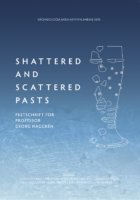
Shattered and scattered pasts – Festschrift for Professor Georg Haggrén
Shattered and scattered pasts – Festschrift for Professor Georg Haggrén. Tuuli Heinonen, Frida Ehrnsten, Janne Harjula, Tarja Knuutinen, Tanja Ratilainen, Elina Terävä, Siiri Tuomenoja & Janne Haarala (eds.). Suomen keskiajan arkeologian seura. Archaeologia Medii Aevi Finlandiae XXXI. Turku 2025. ISBN 978-952-69004-8-3 (softcover) / ISBN 978-952-69004-9-0 (pdf). 514 p.
To celebrate Professor Georg Haggrén’s 60th birthday and his contributions to the field, his colleagues and friends present this Festschrift – a collection of 44 scholarly articles reflecting his wide-ranging expertise and research interests.
The volume covers a diverse array of topics, including Rural and
Urban Spaces, Castles and Manors, Production, Biographies and
Objects, and Glass and Vessels. These subjects highlight Georg’s
deep engagement with historical archaeology, from medieval
settlements and industrial production to personal artifacts and
material culture. His groundbreaking work, particularly in the study
of glass, has earned him recognition as a leading expert in Finland
and beyond.
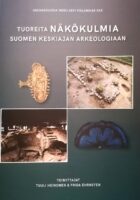
Tuoreita näkökulmia Suomen keskiajan arkeologiaan
Tuoreita näkökulmia Suomen keskiajan arkeologiaan. Tuuli Heinonen & Frida Ehrnsten (eds.). Suomen keskiajan arkeologian seura. Archaeologia Medii Aevi Finlandiae XXX. Turku 2024. ISBN 978-952-69004-6-9 (print) / ISBN 978-952-69004-7-6 (pdf). 244 p.
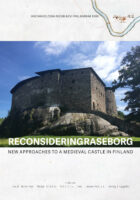
Reconsidering Raseborg – New approaches to a medieval castle in Finland
Reconsidering Raseborg – New approaches to a medieval castle in Finland. Suomen keskiajan arkeologian seura. Archaeologia Medii Aevi Finlandiae XXIX. Turku 2023. ISBN 978-952-69004-4-5 (print) / ISBN 978-952-69004-5-2 (pdf). 316 p.
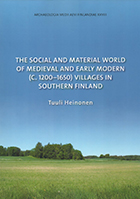
The Social and Material World of Medieval and Early Modern (c. 1200-1650) Villages in Southern Finland
Tuuli Heinonen: The Social and Material World of Medieval and Early Modern (c. 1200-1650) Villages in Southern Finland. Suomen keskiajan arkeologian seura. Archaeologia Medii Aevi Finlandiae XXVIII. Turku 2021. ISBN 978-951-51-7292-1 (print) / ISBN 978-951-51-7293-8 (pdf
During the Middle Ages and early modern period, most of the people in Southern Finland lived in villages, but quite little has been known about their everyday life because of the scarceness of historical sources. However, the increasing archaeological material offers a great new opportunity to study the material culture in the villages, and at the same time discuss the social life of the inhabitants.
This study examines medieval villages as a social and material environment through the examples given by five villages located in Uusimaa, Southern Finland. By comparing the excavated buildings, objects and historical sources, a nuanced picture ois drawn of the different sides of the everyday life in the villages. The studied villages clearly demonstrate that the villages were varied environments, and that the differences in the material culture between the farms were closely connected to the differences in social position and contact nets the inhabitants had.
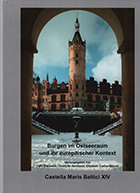
Castella Maris Baltici XIV. Burgen im Ostseeraum und ihr europäischer Kontext.
Felix Bierman, Elisabeth Crettaz-Stürzel & Christofer Herrmann (toim.): Castella Maris Baltici XIV. Burgen im Ostseeraum und ihr europäischer Kontext. Beiträge der Konferenz vom 27.8.-1.9.2017 auf der Marksburg bei Braubach am Rein. Suomen keskiajan arkeologian seura. Archaeologica Medii Aevi Finlandiae XXVII. Turku 2021. Beiträge zur Ur- und Frühgeschichte Mitteleuropas, Band 98. Langenweissbach 2021. ISBN 978-3-95741-144-0 / 978-952-69004-2-1.
The publication consists of twelve articles based on papers given during the 14th Castella Maris Baltici conference in Braubach, Germany in autumn 2017.
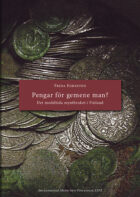
Pengar för gemene man? Det medeltida myntbruket i Finland.
Frida Ehrnsten: Pengar för gemene man? Det medeltida myntbruket i Finland. Suomen keskiajan arkeologian seura. Archaeologica Medii Aevi Finlandiae XXVI. Turku 2019. ISBN 978-951-51-5466-8 (print) / ISBN 978-951-51-5467-5 (PDF). 389 pages.
During the Middle Ages, the are we today call Finland was incorporated into the Swedish empire. Hand in hand with the expansion of the Swedish realm to the east, a new way of valuing the environment was also introduced, as a state-controlled currency in the form of minted metal eventually gained ground in the public economy. This was a gradual change, the use of coins varied in different settings and throughout the whole medieval period the monetary circulation was part of a heterogenous economical system. The coins represented the new power and on a concrete level the coins functioned as a common denominator between the ordinary people and the authorities, formed by the church and the crown. The monetary circulation was also influenced by the trade on the Baltic sea and an international economy based on comparable currencies.
The primary use of coins as means of payment was not multifaceted, but in secondary contexts they could get new meanings. For the ordinary man the coins were an instrument, through which one’s place in society was paid for in taxes. Through the trade the coins could be changed to products and as offerings coins were used when asking for absolution from the church. This dissertation seeks answers to how coins spread in time and space, what kind of coins circulated and how the ordinary people apprehended the coins as a means of payment and a symbol of value.
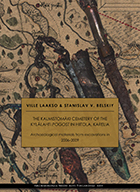
The Kalmistomäki Cemetary of the Kylälahti Pogost in Hiitola, Karelia. Archaeological materials from excavations in 2006-2009
Ville Laakso & Stanislav V. Belskiy: The Kalmistomäki Cemetary of The Kylälahti Pogost in Hiitola, Karelia. Archaeological materials from excavations in 2006-2009. Suomen keskiajan arkeologian seura. Archaeologia Medii Aevi Finlandiae XXV. Turku 2018. 328 pages.
Archaeological excavations of the burial ground of Kalmistomäki in Kylälahti in the north-western Ladoga region were carried out in 2006–2009. The site was used by a population that was obviously very wealthy and had lively contacts with outside areas in different directions. During the fieldwork 93 burials were excavated. In 51 cases, diverse artefacts were found accompanying the burials: personal ornaments and costume parts.
The cemetery is not only the largest in Karelia in terms of number of burials excavated, but also the richest in terms of number of burials with artefacts. The site is exceptional also in other ways. For the first time in the archaeology of Karelia, materials of the 14th and 15th centuries are so distinctly represented that they allow us to arrive at several highly significant conclusions concerning the evolution of burial rites in the region.
A distinctive feature of the materials from the cemetery of Kylälahti is manifested in finds of Central or Northern European imports. Their presence among the Karelian complexes indicates the continuation of stable tendencies in material culture that had appeared in a more ancient period, as well as the direction of external connections. The finds from the cemetery suggest that the peculiar material culture of Crusade Period Karelia was not in the least abandoned in the early 14th century. The evidence obtained at the cemetery allows us to distinguish yet another period in the existence of the distinctive material culture of the area from the 14th to the 15th century.
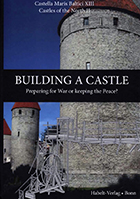
Castella Maris Baltici XIII / Castles of the North II. Building a Castle. Preparing for War or Keeping the Peace?
Proceedings of the symposium held in Vordingborg, Nyborg and Elsinore in Denmark on the 24th to the 28th August 2015. Edited by Nils Engberg, Vivian Etting, Lars Meldgaard Sass Jenssen, Claus Sørensen and Dorthe Wille-Jørgensen. Suomen keskiajan arkeologian seura and Research Association ”Magt, Borg og Landskab”. Archaeologia Medii Aevi Finlandiae XXIV. Dr. Rudolf Habelt GMBH. Bonn 2018. ISBN 978-952-69004-0-7.
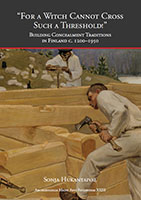 ”For a Witch Cannot Cross Such a Threshold!” Building Concealment Traditions in Finland c. 1200-1950
”For a Witch Cannot Cross Such a Threshold!” Building Concealment Traditions in Finland c. 1200-1950
Sonja Hukantaival: ”For a Witch Cannot Cross Such a Threshold!” Building Concealment Traditions in Finland 1200-1950. Suomen keskiajan arkeologian seura. Archaeologia Medii Aevi Finlandiae XXIII. Turku 2016. 398 sivua. ISBN 978-952-67329-8-5 (print), 978-952-67329-9-2 (pdf).
SOLD OUT
Why did people in the past hide animal bones and other objects in the structures of their buildings? This study discusses building concealment practices and the worldview where they were meaningful in the light of archaeological finds and folklore accounts. Moreover, the book introduces a means for studying historical folk religion as part of the archaeology of religion.
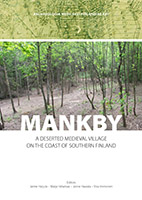 Mankby – A Deserted Medieval Village on the Coast of Southern Finland
Mankby – A Deserted Medieval Village on the Coast of Southern Finland
Edited by Janne Harjula, Maija Helamaa, Janne Haarala & Visa Immonen. Suomen keskiajan arkeologian seura. Archaeologia Medii Aevi Finlandiae XXII. Turku 2016. 192 pages. ISBN 978-952-67329-7-8. ISSN 1236-5882.
In August 1556 a village of six farms was abandoned in Espoo in Southern Finland. Mankby, as the village was called, had been a prosperous dwelling place since the 13th century, but all this changed when king Gustav Vasa decided to found a royal demesne nearby and incorporated the fields of Mankby in the new estate. During a rapid desertion process, the peasants moved to new homes, and the old village plot became uninhabited until this day.
During seven years of excavations, 2007–2013, archaeologists from Helsinki University and Espoo City Museum have unveiled remains of the village of Mankby. This volume presents the results of this research, shedding light on many different aspects of medieval life. The main excavated structures, the results of the scientific analyses and the artefacts found during the excavations are presented in this volume, as well as the medieval settlement structure of the region and its prehistoric predecessors.
Mankby has shown to be one of the best preserved village sites in Southern Finland, and the research on this site has updated our view on medieval peasants and their life conditions. The studies discuss new aspects on dwellings, contacts, trade, subsistence, diet and social structures. The village and its rich find material reflects the historic phenomena of its time: the medieval Swedish colonisation of the Finnish coast, the influence of the Hanseatic League and the dawn of early modern society. The results of the research in Mankby offer both micro-historic glimpses into the past and insights into the larger picture of history.
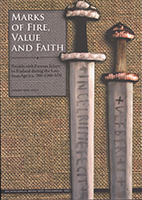 Marks of Fire, Value and Faith: Swords with Ferrous Inlays in Finland during the Late Iron Age (ca. 700-1200 AD)
Marks of Fire, Value and Faith: Swords with Ferrous Inlays in Finland during the Late Iron Age (ca. 700-1200 AD)
Mikko Moilanen: Marks of Fire, Value and Faith: Swords with Ferrous Inlays in Finland during the Late Iron Age (ca. 700-1200 AD). Suomen keskiajan arkeologian seura. Archaeologica Medii Aevi Finlandiae XXI. Turku 2015. 463 pages. ISBN 978-952-67329-1. ISSN 1236-5882.
Marks of Fire, Value and Faith explores swords with ferrous inlays found in Finland and dating from the late Iron Age, ca.700-1200 AD. These swords reflect profound changes not only in styles and fashion but in the technology of hilts and blades. This study explores how many of these kinds of swords are known from Finland, how they were made and where, what their status was in Late Iron Age Finland, and where the Finnish finds stand in accordance with other areas of Europe.
The swords are studied through multidisciplinary research, including traditional typologies as well as research methods from the natural sciences and also experimental archaeology. While the weight of this work lies in the inlays and their meanings, this study also inspects the swords not only from the surface but also from inside to achieve a thorough picture of the life cycle of iron inlaid swords. The colourful finds from Finland are represented in a catalogue at the end of this work.
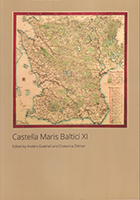 Castella Maris Baltici XI
Castella Maris Baltici XI
Proceedings of a symposium held in Malmö, Sweden on the 27th of May to the 2nd of June 2012. Edited by Anders Gutehall and Chatarina Ödman. Suomen keskiajan arkeologian seura and Malmö Museer. Archaeologia Medii Aevi Finlandiae XX. Malmöfynd 22. Malmö 2015. 210 pages. ISBN 978-952-67329-5-4. ISSN 1236-5882.
SOLD OUT
This publication presents the proceedings of the 11th Castella Maris Baltici symposium, held on the 27th of May to the 2nd of June 2012. The geographical meeting places were Malmö and Osby, both situated in the southern Swedish province of Scania.
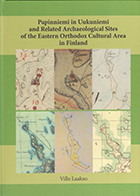 Papinniemi in Uukuniemi and Related Archaeological Sites of the Eastern Orthodox Cultural Area in Finland
Papinniemi in Uukuniemi and Related Archaeological Sites of the Eastern Orthodox Cultural Area in Finland
Ville Laakso: Papinniemi in Uukuniemi and Related Archaeological Sites of the Eastern Orthodox Cultural Area in Finland. Archaeologia Medii Aevi Finlandiae XIX. Turku 2014. 197 pages. ISBN 978-952-67329-4-7. ISSN 1236-5882.
The main purpose of this study is to address, with reference to archaeological material, the complex of structures and remains at Papinniemi in Uukuniemi, East Finland and the community that occupied this site, and to place them as broadly as possible in their relevant cultural context.
Papinniemi is an example of the overall major change in settlement in the mid-17th century that led to the formation of several archaeologically interesting deserted dwelling sites throughout Käkisalmi Karelia. Owing to its diversity and good degree of preservation, the Papinniemi complex can be regarded as particularly significant archaeological remains of the Orthodox cultural sphere in Finland.
The archaeological excavations of the deserted village have concerned the remains of a dwelling and a church, the cemetery, a field-clearing cairn and the location where a coin hoard was deposited. The archaeological material indicates both varied and intensive human activity in the area. The Papinniemi complex dates from the 15th–17th centuries.
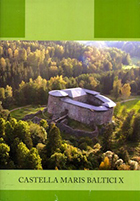 Castella Maris Baltici X
Castella Maris Baltici X
Finland 24–29.8.2009: Raseborg, Olavinlinna and Häme Castles. Ed. by Kari Uotila, Terhi Mikkola and Anna-Maria Vilkuna. Suomen keskiajan arkeologian seura. Archaeologia Medii Aevi Finlandiae XVIII. Turku 2012. 224 pages. ISBN 978-952-67329-3-0. ISSN 1236-5882.
The proceedings of the Castella Maris Baltici X conference contain twenty four articles on the castles sited around the Baltic Sea and the Continent. Castella Maris Baltici conferences have been organized in the countries surrounding the Baltic Sea since 1991 and the tenth conference was held in Finland in 2009.
The articles in this publication present the new approaches and analyzing methods used on the medieval castles of the Baltic regain. These methods analyze and consider the everyday life and inhabitants of the castles, environs outside the walls and the restoration and modern uses of these historical sites. The languages of the articles are English and German.
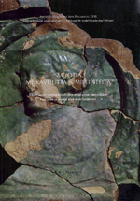 Muotia, mukavuutta ja mielipiteitä: Kaakeliuuni yhteiskunnallisten muutosten ilmentäjänä keskiajan ja uuden ajan alun Suomessa – Fashion, Comfort and Conviction: The ceramic tile stove as an indicator of social change in medieval and early modern Finland
Muotia, mukavuutta ja mielipiteitä: Kaakeliuuni yhteiskunnallisten muutosten ilmentäjänä keskiajan ja uuden ajan alun Suomessa – Fashion, Comfort and Conviction: The ceramic tile stove as an indicator of social change in medieval and early modern Finland
Kirsi Majantie: Muotia, mukavuutta ja mielipiteitä: Kaakeliuuni yhteiskunnallisten muutosten ilmentäjänä keskiajan ja uuden ajan alun Suomessa – Fashion, Comfort and Conviction: The ceramic tile stove as an indicator of social change in medieval and early modern Finland. Archaeologia Medii Aevi Finlandiae XVII. Suomen Keskiajan Arkeologian Seura. Turku 2010. 391 pages. ISBN 978-952-67329-1-6 (printed book), 978-952-67329-2-3 (PDF). ISSN 1236-5882.
Fashion, Comfort and Conviction is a study investigating the adoption and significance of the ceramic tile stove in medieval and early modern Finland. It presents stove tiles found in archaeological excavations, places the tiles in their cultural contexts and examines them as indicators of various social changes. The early history of the ceramic tile stove goes back to the 12th century in the German-speaking Alpine regions, from where it spread to the Baltic Sea region during the Middle Ages. On the basis of the archaeological finds presented in this study, the introduction of the tile stove in Finland dates to the early 15th century. Its adoption was connected to the increase in foreign trade links and social emulation, the demand for comfort, and innovations in building technology and interior design. Stove tiles also reflect the political and religious convictions of their time and open a fascinating window on everyday life in medieval and early modern Finland.
A 50-page summary in English.
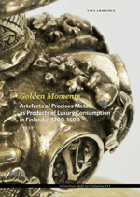 Golden Moments: Artefacts of Precious Metals as Products of Luxury Consumption in Finland c. 1200–1600
Golden Moments: Artefacts of Precious Metals as Products of Luxury Consumption in Finland c. 1200–1600
Visa Immonen. Golden Moments: Artefacts of Precious Metals as Products of Luxury Consumption in Finland c. 1200–1600. Archaeologia Medii Aevi Finlandiae XVI. Suomen Keskiajan Arkeologian Seura. Turku 2009. 331 + 202 pages. ISBN 978-951-96801-8-7 (set of two volumes), 978-951-96801-9-4 (vol. 1), 978-952-67329-0-9 (vol. 2). ISSN 1236-5882.
SOLD OUT
Golden moments is a study of the consumption of gold and silver artefacts in Finland during the Middle Ages and the Early Modern Period. It presents the corpus of surviving artefacts and discusses their techniques of production, appearance, and survival. Above all, the study approaches gold and silver artefacts as a window on the consumption of luxuries, and places the objects in their contexts of use, discard and cultural significance.
The present work offers a synthesis of existing museum collections and recent archaeological material with the aid of documentary research methods and the theoretical insights of material culture studies. The results are presented in two volumes. The first part analyses the material and its contribution to the understanding of luxury consumption, while the second part is a catalogue of all the artefacts with descriptions, measurements and photographs.
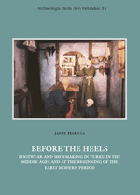 Before the Heels: Footwear and Shoemaking in Turku in the Middle Ages and at the Beginning of the Early Modern Period
Before the Heels: Footwear and Shoemaking in Turku in the Middle Ages and at the Beginning of the Early Modern Period
Janne Harjula. Archaeologia Medii Aevi Finlandiae XV. Suomen keskiajan arkeologian seura. Turku 2008. 224 pages. ISBN: 978-951-96801-7-0. ISSN: 1236-5882. Published in June 2008.
What were the shoe styles like and where did the fashions come from? What kind of footwear did children have? How were feet shod in winter or when walking on muddy streets? How did the constructions of medieval shoes differ from post-medieval types? What kind of evidence is there of local shoemaking?
In this study, we are led into the history of shoes and their manufacture. The book is based on the author’s thorough survey and analysis of archaeological finds related to footwear and shoemaking in the town of Turku, Finland, and the nearby Turku Castle. It covers the period from the foundation of Turku in the late 13th century to the dawn of the Early Modern Period in the first half of the 16th century. In treating its theme in this extent and depth, the study is the first of its kind in Finland.
The study is a part of the project Medieval Urban Life in Motion – Challenges and Possibilities for Archaeological Understanding of a Town (Turku, Finland), funded by the Academy of Finland in 2004-2006. It was carried out in the School of Cultural Research, Department of Archaeology, University of Turku, Turku Provincial Museum and Aboa Vetus Museum. This book is the fifteenth volume in the Archaeologia Medii Aevi Finlandiae series, publications of the Society for Medieval Archaeology in Finland. It can be recommended for archaeologists, historians, re-enactors and anyone interested in shoes and their cultural history.
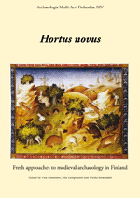 Hortus novus: Fresh approaches to medieval archaeology in Finland
Hortus novus: Fresh approaches to medieval archaeology in Finland
Ed. by Visa Immonen, Mia Lempiäinen & Ulrika Rosendahl. Archaeologia Medii Aevi Finlandiae XIV. Suomen keskiajan arkeologian seura. Turku 2007. 176 pages. ISBN 978-951-96801-6-3. ISSN 1236-5882.
The Society for Medieval Archaeology in Finland has compiled this collection of articles to present the work of young Finnish medieval archaeologists especially for an international audience. The compilation reflects the special characteristics and current disciplinary developments of medieval archaeology in Finland.
The collection comprises fourteen articles on various subjects covering all aspects of medieval archaeology: rural and urban archaeology, medieval material culture, maritime archaeology, lines of communication, and the archaeology of religious beliefis. Also such issues as the archaeology of castles and experimental archaeology are covered.
Medieval archaeology as a discipline has experienced a considerable transformation in the late 20th century. The use of scientific analyses, including osteological and dendrochronological studies, has provided completely new means for approaching the medieval past. Furthermore, the recent increase in the amount of archaeological material available to scholars in Finland as well as the new methodological and theoretical views have also affected the ways in which the research process, the aims of the discipline, and its relationship with contemporary society are conceived. The current volume presents the young generation’s on-going research and views on these developments.
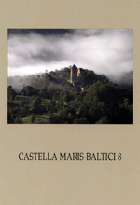 Castella Maris Baltici VIII
Castella Maris Baltici VIII
The proceedings of a Symposium held in Turaida, Latvia on 5-9 September 2005. Ed. by Andris Caune ja Ieva Ose. Society of Medieval Archaeology of Finland and Institute of the History of Latvia, University of Latvia. Archaeologia Medii Aevii Finlandiae XIII. Institute of the History of Latvia Publishers. Riga 2007. 178 pages. ISBN 978-9984-9924-5-7. ISSN 1236-5882:13.
SOLD OUT
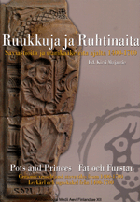 Pots and Princes: Ceramic vessels and stove tiles from 1400-1700
Pots and Princes: Ceramic vessels and stove tiles from 1400-1700
Ed by. Kirsi Majantie. Archaeologia Medii Aevi Finlandiae XII. Aboa Vetus & Ars Nova and Suomen keskiajan arkeologian seura. Turku 2007. 224 pages and DVD. ISBN 978-951-96801-5-6. ISSN 1236-5882.
Pots and Princes – Ceramic vessels and stove tiles from 1400-1700 tells about the significance of ceramic vessels and stove tiles in the cultural history of medieval and early modern Northern Europe.
The various forms and rich decorative motifs of ceramic vessels and stove tiles reflect the social, religious, political and economic changes of their time. Their migration from the home district of German Hanseatic merchants to the Baltic Sea region bears witness to the creation of a common material culture and the adoption of uniform customs throughout Northern Europe.
This work is based on an archaeological exhibition by Aboa Vetus & Ars Nova Museum in Turku, Finland, which presented over 300 artefacts from the collections of eighteen museums in the Nordic Countries and the Baltic Sea region. The thirteen scholarly articles in this publication provide a unique survey of the development of redware vessels and ceramic stove tiles as well as of the start of their local production throughout Northern Europe. The catalogue presents beautiful colour photographs of the objects displayed in the exhibition.
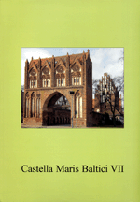 Castella Maris Baltici VII
Castella Maris Baltici VII
Ed. by Felix Biermann, Matthias Müller and Christopher Herrmann. Archaeologia Medii Aevi Finlandiae XI. Ernst-Mortiz-Arnst-Universität Greifswald. Greifswald 2006. 184 pages. ISSN 1236-5882.
SOLD OUT
The theme of the conference held in Greifswald in 3-6 September 2003 was ‘Town as a place of defence from the perspectives of architecture, law and social history’. This compilation comprises 19 papers of the conference.
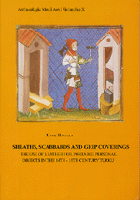 Sheaths, Scabbards and Grip Coverings: The use of leather for portable personal objects in the 14th-16th century Turku
Sheaths, Scabbards and Grip Coverings: The use of leather for portable personal objects in the 14th-16th century Turku
Janne Harjula. Archaeologia Medii Aevi Finlandiae X. Suomen keskiajan arkeologian seura. Turku 2005. 163 pages. ISBN 951-96801-4-4. ISSN 1236-5882.
SOLD OUT
This book offers an interesting glimpse on the material culture of medieval Turku, the most important town of Finland in the Middle Ages. In this archaeological study by Janne Harjula, there are presented and discussed the knife sheaths, sword scabbards and grip coverings from swords or daggers found in archaeological surveys and excavations carried out during the last hundered years in the town of Turku and at Turku Castle. The objects of this study were manufactured of leather, a significant raw material often called ‘the plastic of the Middle Ages’. The whole research material is comprised of 224 artefacts, dated to 14th-16th cenuturies.
As personal equipment accompanying the owner, the artefacts of this study inevitably reflect the mentality and aesthetic values of their period and society. These have been viewed by studying the decoration of the artefacts. It is also asked where and by whom the objects were made, and who the users were.
All the artefacts have been individually described in text and pictures in the catalogue section of the book. Besides the medieval material, there’s been included a short introduction to Iron Age sheaths and scabbards in Finland in the light of the present knowledge.
The study is a part of the project ‘From Village into Town – Changing Ways of Life in Southwestern Finland from the 10th to the 16th century’. The project was funded by the Academy of Finland in 2001-2003 and carried out in the Department of Archaeology, University of Turku and Turku Provincial Museum.
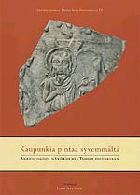 Kaupunkia pintaa syvemmältä – arkeologisia näkökulmia Turun historiaan
Kaupunkia pintaa syvemmältä – arkeologisia näkökulmia Turun historiaan
Ed. by Liisa Seppänen. Archaeologia Medii Aevi Finlandiae IX. TS-Yhtymä and Suomen keskiajan arkeologian seura. Turku 2003. 409 pages. ISBN 951-9129-57-X. ISSN 1236-5882.
SOLD OUT
The book comprises over 30 articles on the urban archaeology of Turku with a special focus on the medieval and early modern period. All articles are written in Finnish or Swedish, but they are accompanied by English summaries.
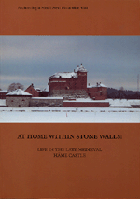 At Home within Stone Walls: Life in the Late Medieval Häme Castle
At Home within Stone Walls: Life in the Late Medieval Häme Castle
Ed. by Terhi Mikkola and Anna-Maria Vilkuna. Archaeologia Medii Aevi Finlandiae VIII. Suomen keskiajan arkeologian seura. Turku 2003. 173 pages. ISBN 951-96801-3-6. ISSN 1236-5882.
The work presents Finland’s perhaps most studied medieval castle – Häme Castle. This book offers an excellent chance to become familiar with those studies in English. It contains articles from different disciplines: history, art history, botany and archaeology. A bibliography provides an opportunity to reach earlier research as well.
The main subject of the book is Anna-Maria Vilkuna’s work, in which she discusses the castle’s function as one of the Crown’s economic centres in the 16th century. Her work also gives a good picture of the everyday life of Häme Castle at that time, answering questions such as Who were the people working at the Castle? What were their duties? How much were they paid? What did they eat? Johanna Onnela’s article about a macrofossil sample from Häme Castle gives further information about nourishment in the form of crop plants used or stored at the Castle.
A survey of the history and the research history of the Castle was written by Knut Drake. He participated in the research of building archaeology in the main castle in the mid-20th century and published the results in his dissertation in 1968. In addition to this, he now deals with interpretations from other scholars and his own new ideas. When research in the main castle was completed, it was continued in outer bailey of Häme Castle. Päivi Luppi, who participated in that work, gives here an interpretation of the outer bailey’s building phases.
The dating of the Häme Castle and the nearby Hattula Church, structures whose building histories are traditionally linked, is treated here by Markus Hiekkanen, who has specialized in medieval churches in Finland. Terhi Mikkola writes about the inner structures of the main castle and gives a hypothesis of their use in the Late Middle Ages.
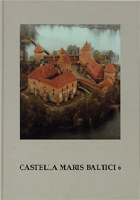 Castella Maris Baltici VI
Castella Maris Baltici VI
Ed. by Albinas Kuncevicius. Archaeologia Medii Aevi Finlandiae VII. Lithuanian Centre of Cultural Heritage. Vilnius 2004. 243 pages. ISBN 9986-420-55-5. ISSN 1236-5882.
In 2001, the conference was organised in Vilnius in Lithuania and this volumes comprises its papers. The subject of the 28 articles in the publication is contacts and genealogical links in castel building.
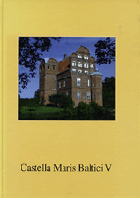 Castella Maris Baltici V
Castella Maris Baltici V
Ed. by Jörgen Skaarup, Nils Engberg and Kjeld Borch Vesth. Archaeologia Medii Aevi Finlandiae VI. Langelands Museum, Rudköbing. Denmark 2001. 193 pages. ISBN 87-88509-25-7. ISSN 1236-5882.
SOLD OUT
The publication of papers of the conference in Rudköbing in Dermark in 1999. The 21 articles of the volume focus on lifestyles lived in castles.
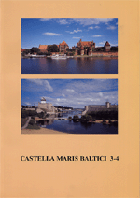 Castella Maris Baltici III-IV
Castella Maris Baltici III-IV
Ed. by Kaur Alttoa, Knut Drake, Kazimierz Pospieszny and Kari Uotila. Archaeologia Medii Aevi Finlandiae V. Muzeum Zamkowe w Malborku. Gdansk 2001. 259 pages. ISBN 951-96801-2-8, 83-86206-42-X. ISSN 1236-5882.
SOLD OUT
The volume includes papers of the conference organised in Malbork Poland in 1995 and in Tartu in Estonia in 1997. The 25 papers of the Malbork conference focus on the relatioship between towns, churches and castles. The theme of five papers of the Tartu conference is methodology and categorisations of the castle studies.
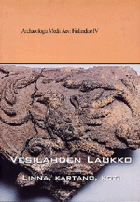 Vesilahden Laukko: Linna, kartano, koti
Vesilahden Laukko: Linna, kartano, koti
Ed. by Kari Uotila. Archaeologia Medii Aevi Finlandiae IV. Kaarina 2000. 160 pages. ISBN 951-96801-1-X. ISSN 1236-5882.
SOLD OUT
Laukko Manor in Vesilahti has been one of the most important manors in the history of Finland. This collection of articles concentrate on the history of Laukko Manor and especially on the results of the latest archaeological excavations done in the Manor.
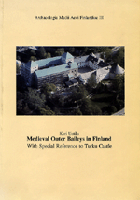 Medieval Outer Baileys in Finland With Special Reference to Turku Castle
Medieval Outer Baileys in Finland With Special Reference to Turku Castle
Kari Uotila: Medieval Outer Baileys in Finland with Special Reference to Turku Castle. Archaeologia Medii Aevi Finlandiae III. Kaarina 1998. 202 pages. ISBN 951-96801-0-1. ISSN 1236-5882.
SOLD OUT
The published dissertation of Kari Uotila is a study on the medieval outer baileys in Finland and their structures, dating and form with a special focus on Turku Castle.
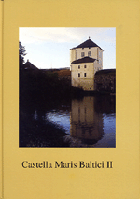 Castella Maris Baltici II
Castella Maris Baltici II
Ed. by Magnus Josephson and Mats Mogren. Archaeologia Medii Aevi Finlandiae II. Särmländska handlingar nr 49. Lund Studies in Medieval Archaeology 18. Nyköping 1996. 247 pages. ISBN 91-87794-12-8. ISSN 1236-5882, 0283-6874.
SOLD OUT
The volume comprises 33 papers held at the conference in Nykäping Sweden in 1993. The theme of the conference was the functioning of castles in the Baltic Sea area from 10th to 16th century.
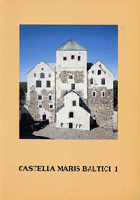 Castella Maris Baltici I
Castella Maris Baltici I
Ed. by Knut Drake. Archaeologia Medii Aevi Finlandiae I. Tammisaari 1993. 275 pages. ISBN 91-22-01566-3. ISSN 1236-5882.
SOLD OUT
A collection of papers held at the first Castella Maris Baltici Conference in Finland in 1991. The 27 articles of the volume focus on castles as centres of power and innovations in the Baltic Sea area between 11th and 15th centuries. In addition to the seminar papers, the volume includes short articles on the medieval castles of Finland.
